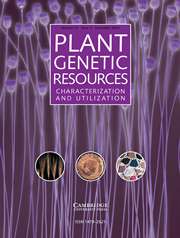No CrossRef data available.
Article contents
Developing polyploid genetic resources for enhanced rebaudioside A synthesis and agronomic traits in Stevia rebaudiana Bertoni
Published online by Cambridge University Press: 27 December 2024
Abstract
Stevia rebaudiana Bertoni stores over 20 glycosides in leaves and stem, the primary sweetening compounds are stevioside and rebaudioside A. Stevioside is 250–300 times and rebaudioside A is 350–450 times sweeter than sucrose. These glycosides can be substituted for free sugars being used in food and beverage industries. Due to limitations in the improvement of stevia through conventional breeding, induced polyploidy technique is a quick way to achieve enhanced leaf yield with increased secondary metabolites production. Presented study was conducted to develop genetic resources by inducing polyploidy and characterizing it. The apical meristem of 30-day-old seedlings was treated with colchicine solutions, ranging from 0.05 to 0.30%. Flow-cytometric analysis confirmed 13 tetraploids and one triploid genotype. Tetraploid plants showed significant changes in plant height, had larger leaf area, thicker leaves and higher levels of stevioside and rebaudioside A content, as compared to control. The triploid plant also surpassed the diploid control in number of branches per plant, leaf thickness, leaf area and fresh stem weight. The tetraploid line (ST 6) had 65.7% higher rebaudioside A content compared to diploid control. Correlation study revealed that leaf area and leaf thickness had an inverse correlation with rebaudioside A content. These newly developed polyploid genotypes offer valuable genetic resources for future stevia breeding programmes and as polyploid varieties for commercial cultivation.
- Type
- Research Article
- Information
- Copyright
- Copyright © The Author(s), 2024. Published by Cambridge University Press on behalf of National Institute of Agricultural Botany


